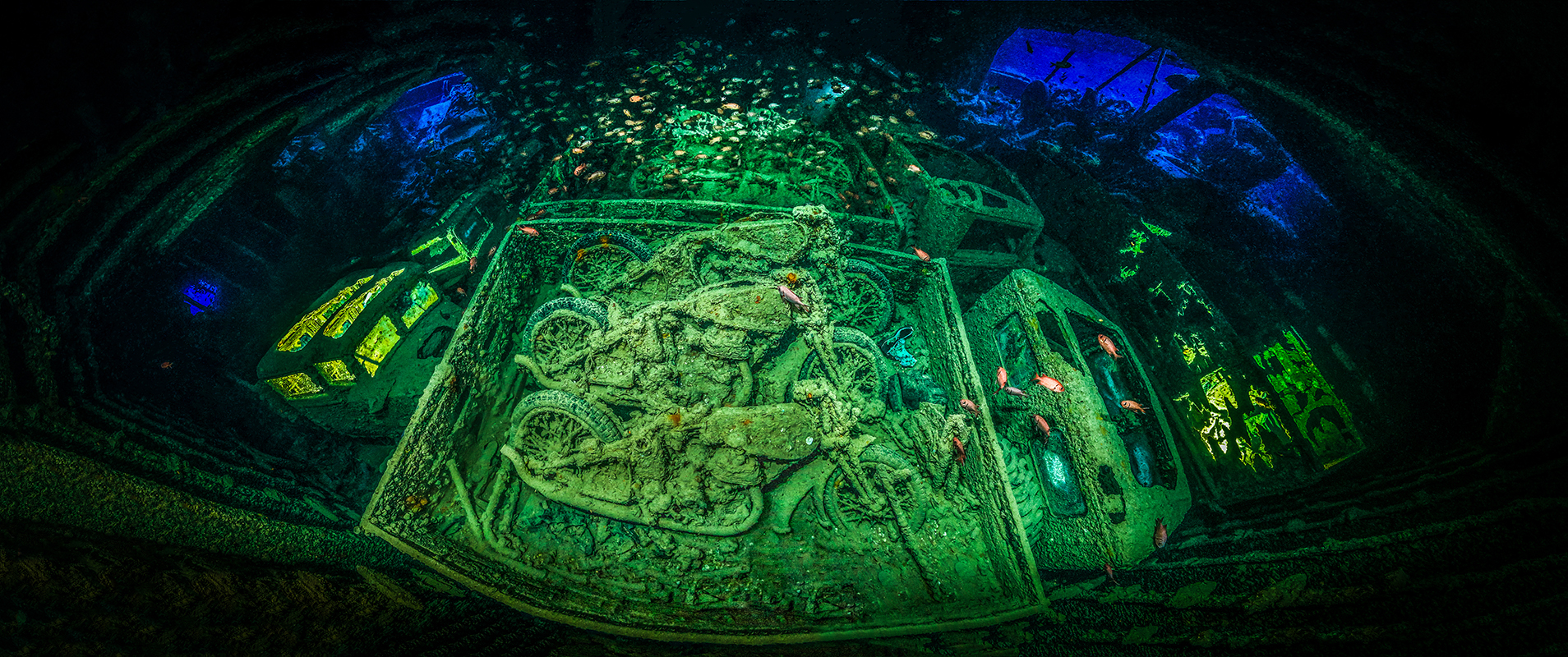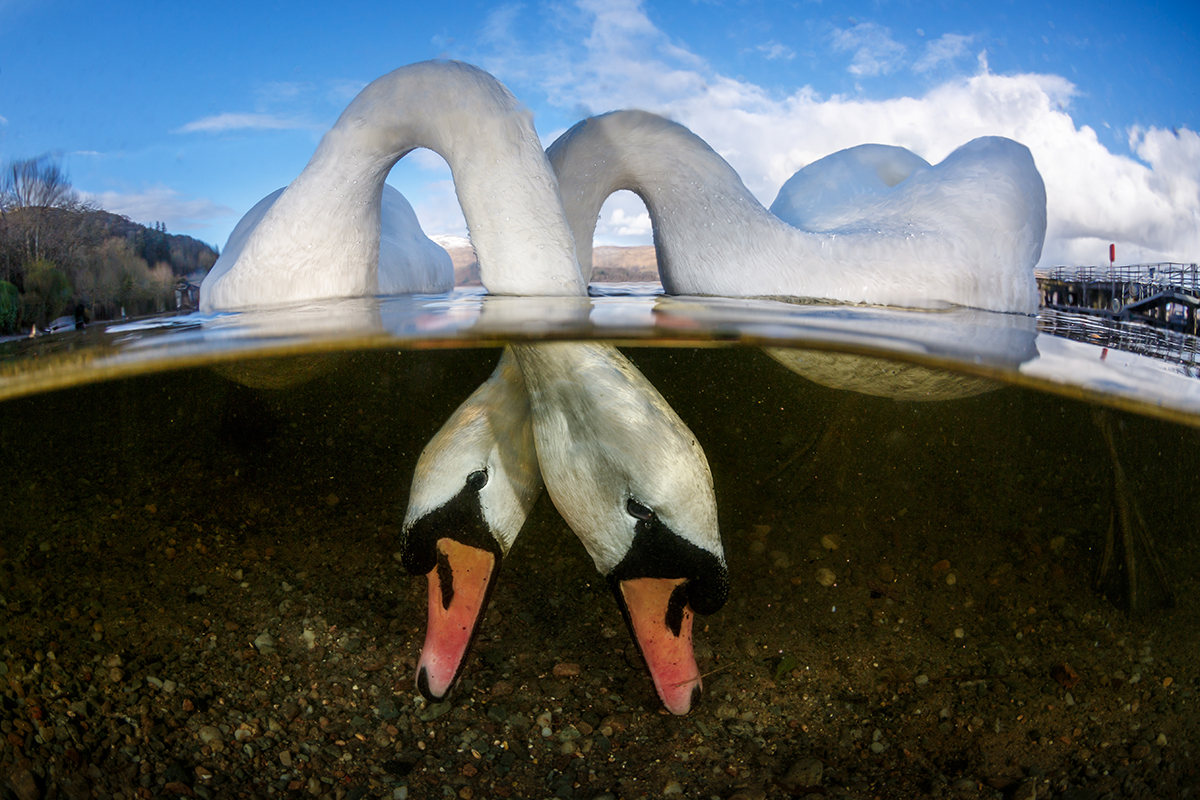This Underwater WWII 'Cemetery' Is Haunting and Amazing

An eerie image of an underwater "graveyard" for British World War II military motorcycles has earned the top prize in the Underwater Photographer of the Year (UPY) contest for 2018.
Titled "Cycle War," the image was captured by German photographer Tobias Friedrich and shows a cargo deck in the SS Thistlegorm, a British munitions ship that German bombers sank in the Red Sea on October 6, 1941. The ship was torn apart by an explosion after flames from the bombs reached its ammunitions stores, and it sank in under a minute along with all the cargo it was carrying, according to the Thistlegorm Project, an ongoing archaeological survey of the wreck.
In the photo, derelict Norton 16H motorbikes recline in the foreground, while schools of colorful fish hover above them. "Cycle War" was selected by UPY as the winner from more than 5,000 photo submissions in 11 categories representing underwater scenes captured by photographers from around the world. [Stunning Photos Capture Eerie Underwater Shipwrecks]
The explosion that sank the Thistlegorm destroyed much of the structure in the middle of the ship, making it highly accessible to divers, according to the Thistlegorm Project website. For years, Friedrich had wanted to photograph the sunken cycles that were part of the lost cargo; he was captivated by the way the motorbikes in the wreck aligned so perfectly with one another, he said in a statement issued by UPY. But he found it impossible to snap the photo that he saw in his mind because the space in the cargo hold was too small — he simply couldn't position his camera far enough from the motorbikes to fit all of them in the frame at once, Friedrich explained.
"As a result, I had to create a panoramic imageof the same scene to capture the whole cargo deck, including some lights that give the image more depth," he said.
In the statement, judge Peter Rowlands, publisher of the online magazine Underwater Photography, described the arresting image as "quite extraordinary." He added that the photo should be viewed "as large as possible."
The annual underwater-photography contest, which named its first Photographer of the Year in 1965, showcases images that explore the watery depths, from the natural habitats of oceans and lakes to the artificial environments of swimming pools. Whether they feature brilliantly colored marine life or darker, more somber tones of battered, encrusted shipwrecks, the images offer remarkable views of life under the water's surface.
Sign up for the Live Science daily newsletter now
Get the world’s most fascinating discoveries delivered straight to your inbox.

Another prize, British Underwater Photographer of the Year, went to Grant Thomas for "Love Birds." Also the winner in the Wide Angle category, this perfectly timed snap shows a pair of feeding swans in Scotland's Loch Lomond, revealing the birds' bodies above the water line as their heads and necks plunge simultaneously below the surface to forage for food.
"My initial idea was to frame a split shot of one swan feeding below the surface of the water," Thomas said in a statement. "But when I noticed how comfortable they were around me, I was confident, with some patience, I could get that magical shot of the two."
The contest also recognized an Up & Coming Underwater Photographer of the Year and a Most Promising British Underwater Photographer, as well as standout entries in each of the 11 categories, which included Behavior, Black and White, Macro, and Wrecks — scenes of submerged human-made machines, vehicles and other structures now designated as artificial reefs and dive sites.
You can see all of the winning photographs on the UPY website.
Original article on Live Science.

Mindy Weisberger is an editor at Scholastic and a former Live Science channel editor and senior writer. She has reported on general science, covering climate change, paleontology, biology and space. Mindy studied film at Columbia University; prior to Live Science she produced, wrote and directed media for the American Museum of Natural History in New York City. Her videos about dinosaurs, astrophysics, biodiversity and evolution appear in museums and science centers worldwide, earning awards such as the CINE Golden Eagle and the Communicator Award of Excellence. Her writing has also appeared in Scientific American, The Washington Post and How It Works Magazine. Her book "Rise of the Zombie Bugs: The Surprising Science of Parasitic Mind Control" will be published in spring 2025 by Johns Hopkins University Press.









